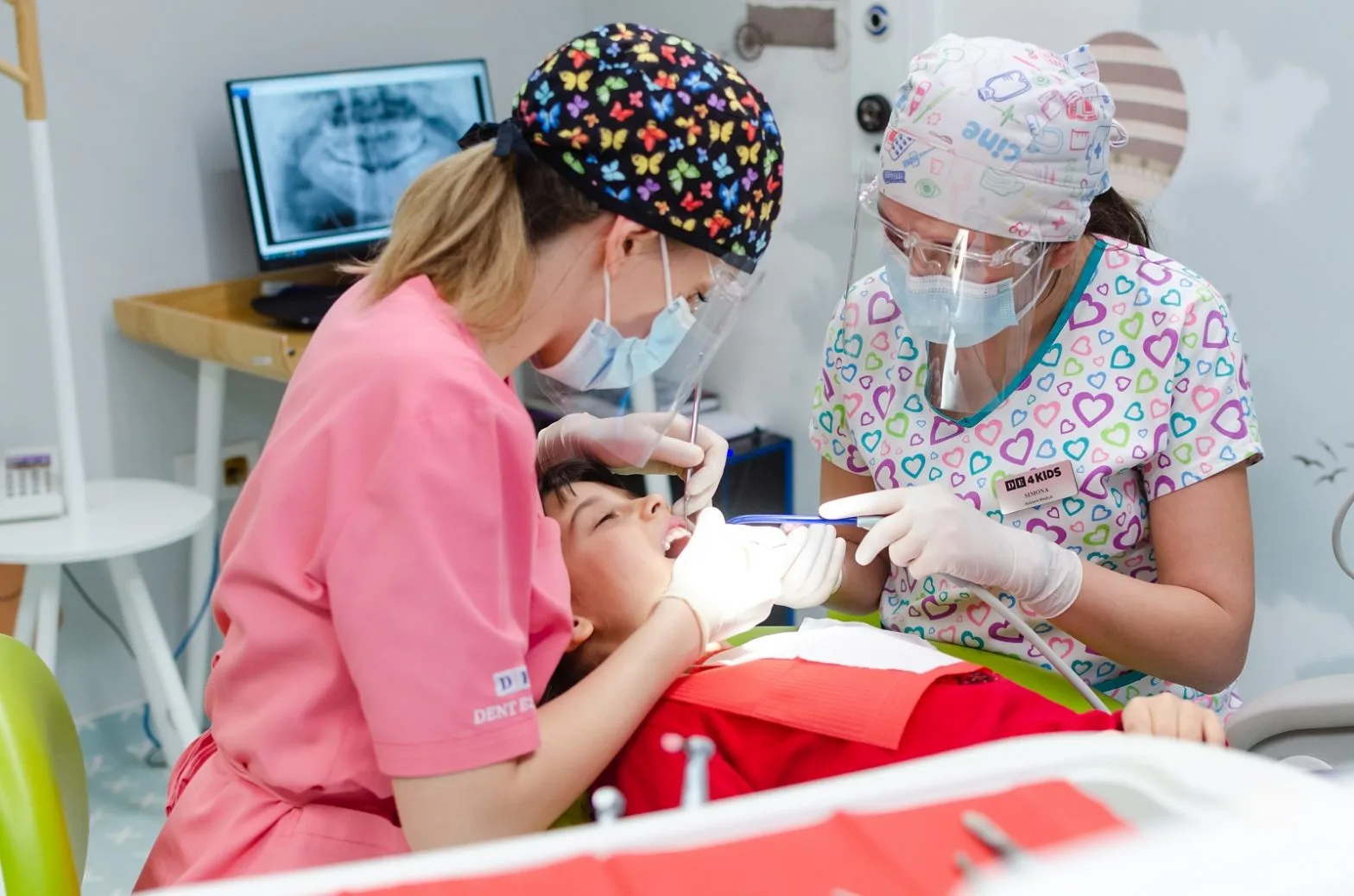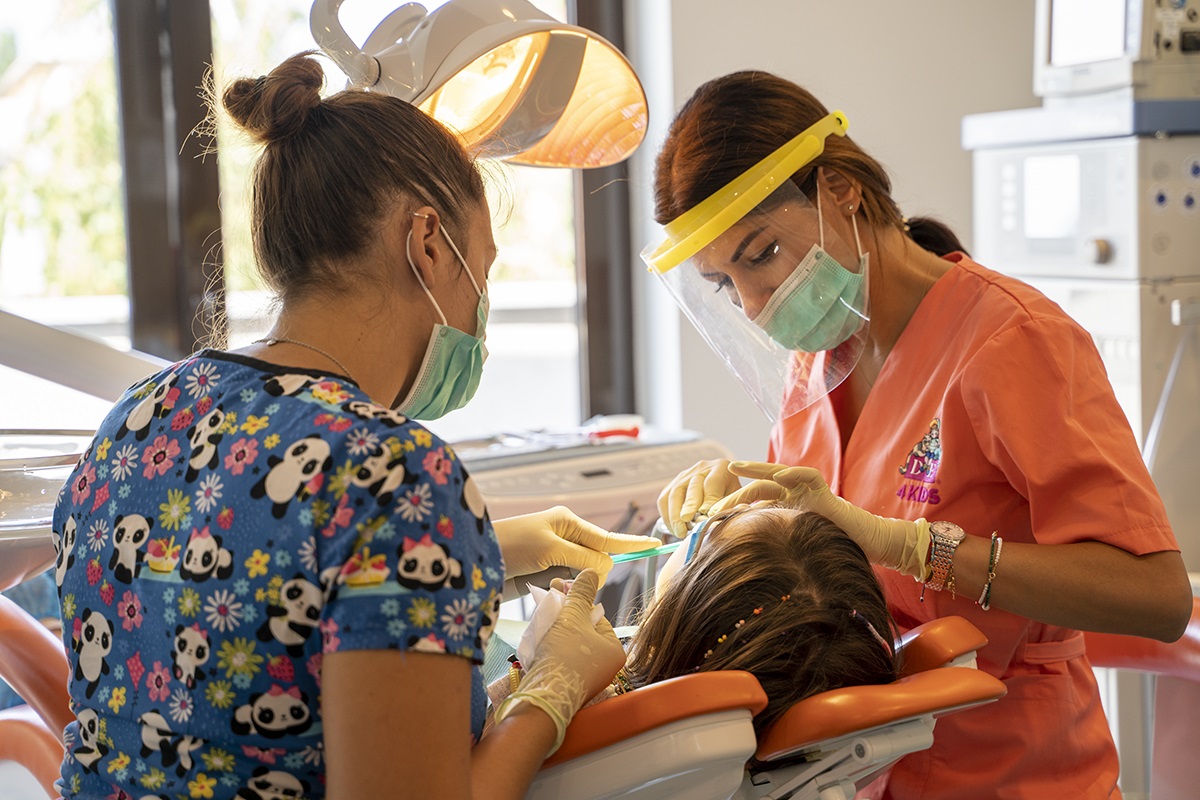
Dental prevention Gingivitis in children: causes and treatment

treating milk teeth is the first step in maintaining your child’s oral and general health in the long term. Dentists recommend that the oral hygiene of the child begin even before the appearance of the first milk tooth, by cleaning the gums, cheeks and tongue.
Treating baby teeth is the first step toward maintaining your child’s long-term oral and general health. Pediatric dentists recommend starting oral hygiene even before the first baby tooth erupts, by cleaning the gums, cheeks, and tongue.
According to the American Academy of Pediatric Dentistry, the first dental check-up should take place within 6 months after the eruption of the first baby tooth, or by the child’s first birthday. This allows the pediatric dentist to monitor the development of the child’s teeth and gums and prevent conditions such as gingivitis, which, if left untreated, can have a major impact on oral health.
Children and teenagers can develop various types of gingivitis, and these conditions should not be ignored based on the misconception that baby teeth are temporary and unimportant.
In fact, early diagnosis of gingivitis by a dentist plays a key role in both oral and general health, as inflamed gums can also be a symptom of more serious systemic conditions.
What is gingivitis in children and what causes gum inflammation?
Does your child have redness around the teeth and gums when brushing? Do they complain of pain or sensitivity while brushing? Do you notice a bit of blood in their saliva?
These may be signs of gingivitis—a condition characterized by superficial inflammation of the gums. Healthy gums are pink and firm, providing proper support for the teeth. When gums lose their firmness and change color (becoming reddish), inflammation is likely present.
One of the most common causes of gingivitis is poor oral hygiene. The mouth contains billions of bacteria, both good and harmful. Without daily brushing, these bacteria multiply and form plaque. If plaque isn’t removed, it hardens into tartar, which can only be removed by professional dental cleaning.
Without routine cleanings every 3-4 months—especially for children aged 6–8—tartar accumulates, housing more bacteria and irritating the gums, leading to redness and possible bleeding.
Gingivitis in children is just as common as in adults
While gingivitis is often associated with adults, studies show that its prevalence among children aged 6–11 in developed countries is around 73%.
During puberty, the incidence of gingivitis increases significantly—between 50% and 99%—with boys being slightly more affected than girls.
Types of gingivitis in children and teenagers
Gum conditions vary and can progress quickly, endangering the periodontal structure (bone and tissues supporting the teeth) of future adults.
Pediatric dentists play a vital role in early recognition and diagnosis of gingivitis and other oral conditions.
Common triggers include:
- Bacterial plaque
- Eruption of permanent teeth
- Malocclusion (bite misalignment)
- Orthodontic appliances
Gingivitis caused by plaque:
Plaque tends to form more rapidly in children aged 8–12 than in adults. In this type of gingivitis, inflammation is limited to the gum margin but can progress if untreated.
Gingivitis linked to tooth eruption:
Though tooth eruption doesn’t directly cause gingivitis, plaque buildup in sensitive erupting areas can lead to inflammation during this period.
Gingivitis from orthodontic treatment:
Orthodontic appliances require meticulous hygiene. Poor cleaning during treatment can result in plaque and subgingival tartar, inflaming the gums.â
Gingivitis due to malocclusion:
Malocclusion (e.g., overbite, underbite) can also contribute to gingivitis due to challenges in maintaining proper oral hygiene in misaligned areas.
Gingivitis in children – Symptoms
Unlike adults, where gum bleeding is the main symptom, gingivitis in children typically manifests as gum swelling and redness.
Gum bleeding may still occur during brushing or when eating harder foods.
Other signs include bad breath, which can be an early symptom of gingivitis in kids and teens.
When should we go to the dentist?
Early diagnosis by a pediatric dentist is crucial for effective treatment. Regular check-ups are essential.
If you notice changes in your child’s gum color or firmness, or if they complain of pain or sensitivity during brushing, don’t delay a dental visit.
Treatment for gingivitis in children
The pediatric dentist will diagnose and recommend the appropriate treatment.
Treatment usually includes professional cleaning to remove plaque and tartar, especially from hard-to-reach areas that a regular toothbrush might miss.
Preventive care (prophylaxis) is essential and should be done every 3–6 months. This may include brushing, fluoride application, ultrasonic scaling, and air-flow polishing.
Fluoride application (in the form of varnish, gel, or foam) helps fight cavities and tooth sensitivity.
The importance of oral hygiene in preventing gingivitis
Good oral hygiene and healthy habits from a young age are the most effective tools in preventing gingivitis.
Dental care should start with the eruption of the first teeth. Until age 4–5, children need supervision while brushing, so parental involvement is key in building long-lasting habits.
Use a soft-bristled toothbrush and fluoride toothpaste, twice daily.
Brushing tips:
- Clean inner tooth surfaces with short, circular strokes.
- Tilt the brush at a 45-degree angle along the gumline and brush gently back and forth.
- Use the tip of the toothbrush to clean behind the front teeth.
- Clean the tongue and the insides of the cheeks too.
Flossing is important to remove food particles between teeth. Children can be introduced to floss from age 4 and usually manage independently by age 8.
Completează formularul și unul dintre asistenții noștri te va contacta pentru a programa vizita la clinică.











 The role of nutrition in preventing cavities in baby teeth
The role of nutrition in preventing cavities in baby teeth 